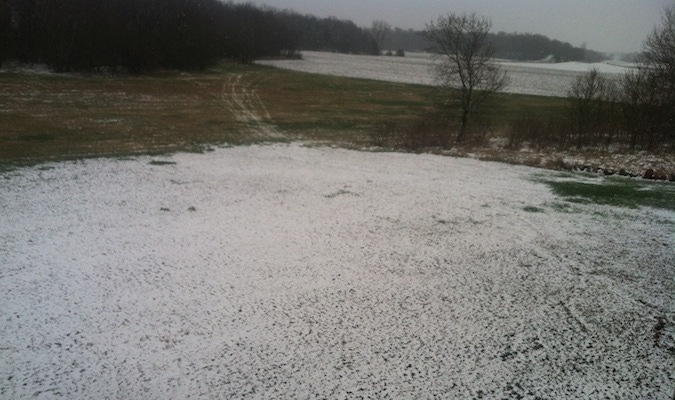May 2, 2013

Farmers across the Corn Belt are eager to start planting corn or are in the early stages of planting their 2013 crop. If cool, wet weather continues, planting will be delayed for many growers and prompt questions about switching to earlier-season corn hybrids.
Long-term research studies from DuPont Pioneer and several universities show that adapted, full-season corn hybrids usually offer the best yield and profit advantage when planting delays are not extreme.
“The cool, wet weather this spring is causing planting delays in many areas, leaving growers questioning whether they need to make hybrid maturity switches,” says Mark Jeschke, DuPont Pioneer agronomy research manager. “It is important to weigh your decision carefully. If you switch to a shorter-season hybrid too soon, you are giving up higher yield potential and profits.”
According to Jeschke, hybrid changes should be based on expected grower returns including yield, drying costs and test weight discounts. Early hybrids should be used under extreme late-plant or replant situations.
Full-season hybrids typically make full use of a growing season. Even when planted late, these hybrids often outperform early-maturing hybrids, adjusting their growth and development to reach maturity in a shortened growing season.
Like what you're reading? Subscribe to CSD Extra and get the latest news right to your inbox!
Long-term studies by both Pioneer and universities, which included a range of hybrid maturities across planting dates extending from April through June, have shown a clear yield and profit advantage for full-season corn hybrids.
“If growers have questions about switching, including replacement hybrid availability, they should consult their Pioneer sales professional,” says Jeschke.
Study Results and Responses
University research shows that full-season hybrids adjust to late planting with a reduction in their growing degree unit (GDU) requirement of up to 6 units/day of planting delay. For example, hybrids planted May 20 may require 150 fewer heat units to reach maturity than the same hybrids planted April 25. This adjustment reduces the risk of fall frost damage to these hybrids.
Pioneer studies across several years reinforce the university findings. Pioneer focused on hybrids planted across the central, north-central, north and far-north regions of the Corn Belt. Hybrids were planted from early April to mid-June and grouped into full, medium and early maturities at each location. Several hybrids were included in each maturity group so that true maturity responses could be measured, rather than just specific hybrid responses. The studies looked at differences in corn grain yield response to planting date, as well as moisture, test weight and gross income response. The data provide growers more relevant planting information for the different regions in which they farm.
For example, in the central Corn Belt, results indicate that early to mid-April planting is best for the greatest corn yield potential. Full-season hybrids – hybrids with a comparative relative maturity (CRM) of 111-115 – yield better and produce better grain at harvest than early-maturity hybrids. Growers should not consider switching full-season hybrids to earlier CRM hybrids until the last week of May.
Soil conditions permitting, April planting also is recommended in the north-central Corn Belt. Growers are encouraged to plant full-season hybrids (103-110 CRM) until the last week of May in this region.
Maturity planning is most critical in northernmost states because of the risk of cool weather or early frost. Pioneer recommends producers in northern Corn Belt areas (central Minnesota and north-central Wisconsin) stick with full-season hybrids (98-105 CRM) until approximately May 27. This recommendation also carries into far-northern areas (northern Minnesota, North Dakota and Quebec, Canada) for hybrids that are full-season there (97-100 CRM).
Growers with questions about specific hybrid characteristics and environmental effects should talk to their seed sales professionals.
You might also like:
April 23 Weekly Weather Update
You May Also Like




